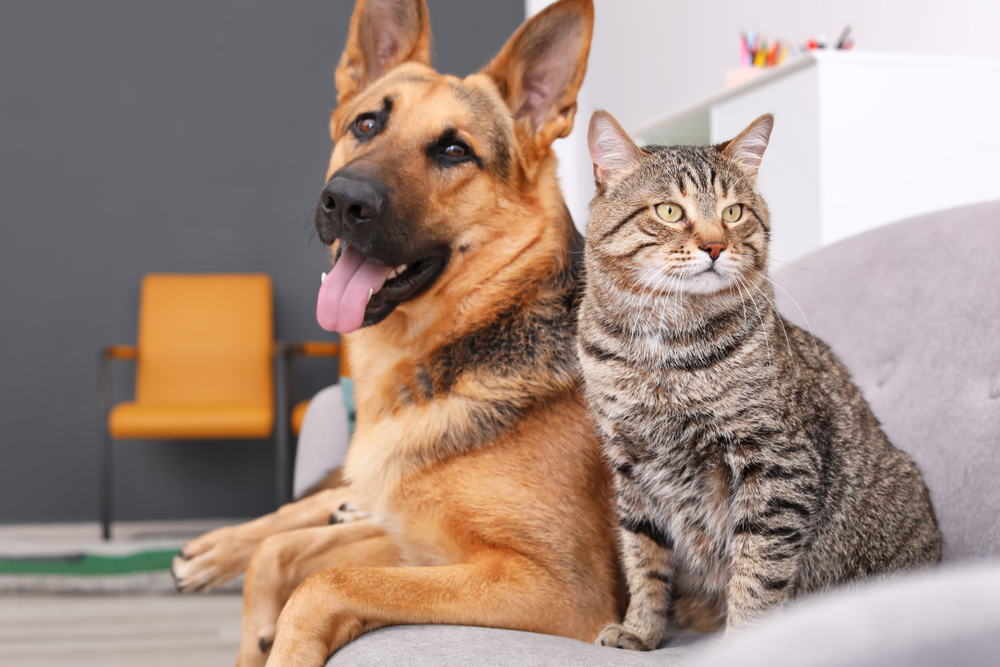Moving can be a time of excitement and gratitude for fresh starts. But, there’s no question that it can also be a stressful experience! On top of the packing, moving day chaos, and settling in period, you may also be dealing with pets who are not sure what to make of the whole process. If your cat or dog has you overwhelmed during your big move, you’re not alone. Luckily, there are tips, tricks, and friendly Pet Sitters who can make moving house much easier.
So, read up while you’re taking a break from packing up your dinnerware and learn how to help your pet transition to a new home!
Try to see things from their perspective
Often, when we’re in the midst of moving stress ourselves, we lose sight of how impactful moving can be to our pets. Cats, for instance, are highly territorial, which means that they are sensitive to even small changes in their environment. Dogs are more social animals, but they too can feel disoriented and anxious about leaving the old den behind.
While every animal will react differently to moving, there are a few behaviours that are quite normal. Urinating in the house, hiding, and refusing to eat are all common responses to the stress of moving. And of course, these are difficult behaviours to deal with when you’re busy with the move! But, try to have some patience and empathy; it’s all part of your pet’s moving process.
Keep up your normal routine
As your home fills up with boxes—and your days fill up with irritating calls to moving companies and internet providers—your pets will sense that change is on the horizon. One of the best things that you can do to help them weather through the changes is to stick with their regular routine.
When you’re knee deep in packing peanuts, though, this is easier said than done! If you’re struggling to continue taking your dog out every day, consider calling on their favourite Dog Walker so that they don’t miss out on their daily exercise. You might also ask some Dog Owner friends if they wouldn’t mind you dropping off your pooch for a playdate so that you can get a few hours of packing in. Your pup will enjoy all the benefits of romping around with their furry friend while you do the hard work of packing!
And while it may seem like a small detail, sticking to a regular feeding and sleeping schedule will go a long way in helping your dog or cat feel less stressed. Pets thrive on predictability!
Make moving day as stress-free as possible
There’s no getting around it: moving day is stressful! You might have strangers coming in and out of your house. You might be stressed about timing. And, of course, no matter how long your to-do list, you’ll still need to meet your pet’s needs, too!
One way that you can make moving day less stressful for your pets is to set up a relaxation room for them. This should be an out-of-the-way area of the house outfitted with their crate or cat bed, all of their toys, food, and place to go potty. It’s also a great idea to leave your pet with a puzzle toy to keep them occupied, and remember to come give them some attention and a break throughout the day.
Another alternative on moving day is to leave your dog or cat in the care of a doting Pet Sitter. That way, they can sidestep the chaos of moving day entirely and skip ahead to getting settled into the new home. If possible, book a familiar Pet Sitter that your furbaby already knows and adores.
Give your pet the grand tour
When you are ready to introduce your pet to their new home, there are a few ways that you can prevent them from feeling overwhelmed.
If you have a dog, for instance, put them on a leash and guide them through the home, allowing them to stop and sniff as long as they want. Having them on lead will allow you to set the pace of the walk-through and give your dog a calming presence while they explore. You might even have a few treats handy to reward your dog for calm behaviour.
If you have a cat, it’s a good idea to start them out in one room and then expand their territory over time. Not only will this allow your cat to build their confidence, but it will also help you keep an eye on them as cats will typically find a place to hide during the first 24 to 48 hours.
No matter what kind of pet you have, make sure that you take the time to show them where their water and food bowls are, as well as the litter box or potty area.
Don’t assume that your pet will remember their potty training
Speaking of showing your furry friend where to do their business, don’t be surprised if your pup or cat doesn’t get the message right away. Many animals will urinate out of anxiety, excitement, or as a way to feel in control of their space. And many pets are simply not very good at generalising. They may have learned not to go in the old house, without realising that the rules apply to the new house as well.
If your pup is having trouble with potty training in the new house, don’t punish them. Always clean up accidents right away with enzymatic cleaner and start over from step one of potty training or litter box training so that your pet knows what you expect of them.
Offer them some familiar comforts
While their surroundings may look, smell, and sound different, you can help your pet feel more comfortable by providing them with familiar objects. Now, this could mean holding on to a few old pieces of furniture instead of getting all new pieces for your new home. Or, you might forgo washing some linens and putting those in your pet’s crate or sleeping area.
Keep a close eye on your pet outside
Doggos and cats have an amazing ability to find their way home. In fact, it seems that they may even rely on Earth’s magnetic fields to point their snoot in the direction of their last familiar place!
And while fascinating, this does pose a risk when moving a dog or cat into a new home. Not only will your cat or dog be disoriented in their new area, but they may also be tempted to go back to the last location where they felt safe. So, at least for the first few weeks, be extra cautious about letting your dog off-leash outside. When it comes to cats, make sure that there are no escape routes so that your furry friend can stay safely inside.
Give it time
Ultimately, your cat or dog will acclimate to their new home in their own time. Giving them predictability, familiarity, and plenty of love and understanding is absolutely helpful, but it’s really time that your pet needs to feel comfortable in their new space.
So, stock up on treats, make sure your pet is getting plenty of exercise at home or with a Dog Walker, and stay patient. Your pet will settle in before you know it!



